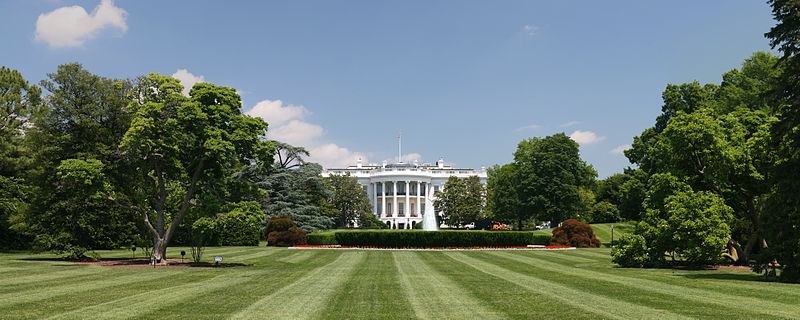
For two years, this writer has been consumed by two subjects.
First, the presidency of Richard Nixon, in whose White House I served from its first day to its last, covered in my new book, Nixon’s White House Wars: The Battles That Made and Broke a President and Divided America Forever.
The second has been the astonishing campaign of Donald Trump and his first 100-plus days as president.
In many ways, the two men could not have been more different.
Trump is a showman, a performer, a real estate deal-maker, born to wealth, who revels in the material blessings his success has brought. Nixon, born to poverty, was studious, reserved, steeped in history, consumed with politics and policy, and among the most prepared men ever to assume the presidency.
Yet the “mess” Trump inherited bears striking similarities to Nixon’s world in 1969.
Both took office in a nation deeply divided.
Nixon was elected in a year marked by the assassinations of Martin Luther King Jr. and Robert Kennedy, race riots in 100 cities, and street battles between cops and radicals at the Democratic National Convention in Chicago.
By the fall of 1969, Nixon had buses surrounding his White House and U.S. Airborne troops in the basement of his Executive Office Building.
Trump’s campaign and presidency have also been marked by huge and hostile demonstrations.
Both men had their elections challenged by the toxic charge that they colluded with foreign powers to influence the outcome.
Nixon’s aides were accused of conspiring with Saigon to torpedo Lyndon Johnson’s Paris peace talks. Trump aides were charged with collusion with Vladimir Putin’s Russia to disseminate stolen emails of the Democratic National Committee. The U.S. establishment, no stranger to the big lie, could not and cannot accept that the nation preferred these outsiders.
Nixon took office with 525,000 troops tied down in Vietnam. Trump inherited Afghanistan, the longest war in U.S. history, and wars in Iraq, Syria, Libya and Yemen.
Nixon pledged to end the Vietnam War with honor and begin an era of negotiations—and did. Trump promised to keep us out of new Mideast wars and to reach an accommodation with Russia.
Nixon and Trump both committed to remake the Supreme Court. Having pledged to select a Southerner, Nixon saw two of them, Judges Clement Haynsworth and Harrold Carswell, savaged by the Senate.
While Nixon was the first president since Zachary Taylor to take office without his party’s having won either house of Congress, Trump took office with his party in control of both. Thus, Trump’s nominee, Judge Neil Gorsuch, made it.
Probably no two presidents have ever faced such hostility and hatred from the media. After his 1969 “Silent Majority” speech on Vietnam was trashed, Nixon declared war, authorizing an attack on the three networks by Vice President Spiro Agnew.
Trump has not stopped bashing the media since he came down the escalator at Trump Tower to declare his candidacy.
In Trump’s first major victory on Capitol Hill, the House voted narrowly to “repeal and replace” Obamacare. Only with a tiebreaking vote by Agnew in August 1969 did Nixon win his first big victory—Senate approval of a strategic missile defense.
Though Nixon had backed every civil rights law of the 1950s and ’60s, he was charged with pursuing a racist “Southern strategy” to capture the South from Dixiecrats, whose ilk had ruled it for a century.
Trump was also slandered for running a “racist” campaign.
Trump and Nixon were supported by the same loyalists—”forgotten Americans,” “Middle Americans,” “blue-collar Democrats”—and opposed and detested by the same enemy, a political-media-intellectual-cultural establishment. And this establishment is as determined to break and bring down Trump as it was to break and bring down Nixon.
Yet though Trump and Nixon ran up similar Electoral College victories, Nixon at the end of 1969 was at 68 percent approval and only 19 percent disapproval. Trump, a third of the way through his first year, is underwater in Gallup.
Nixon’s achievements in his first term were extraordinary.
He went to Beijing and opened up Mao Zedong’s China to the world, negotiated with Moscow the greatest arms limitation agreement since the Washington Naval Treaty of 1922, and withdrew all U.S. forces from South Vietnam.
He desegregated the South, ended the draft, gave the vote to all 18-year-olds, indexed Social Security against inflation, created the Environmental Protection Agency and the Occupational Safety and Health Administration, named four justices to the Supreme Court, presided over six moon landings, declared a “war on cancer,” proposed a guaranteed annual income, created revenue sharing with the states, took America off the gold standard, and let the dollar float.
He then won a 49-state landslide in 1972, creating a “New Majority,” and setting the stage for Republican control of the presidency for 16 of the next 20 years.
But in June 1972, a bungled bugging at the DNC, which Nixon briefly sought to contain and then discussed as the White House tapes were rolling, gave his enemies the sword they needed to run him through.
The same deep state enemies await a similar opening to do to Trump what they did to Nixon. Rely upon it.
Patrick J. Buchanan is the author of a new book, Nixon’s White House Wars: The Battles That Made and Broke a President and Divided America Forever. To find out more about Patrick Buchanan and read features by other Creators writers and cartoonists, visit the Creators website at www.creators.com.
COPYRIGHT 2017 CREATORS.COM
[Image: I, Daniel Schwen [CC BY-SA 2.5]]
Leave a Reply